Recent Articles
Popular Makes
Body Types
2022 Hyundai Tucson Road Test and Review
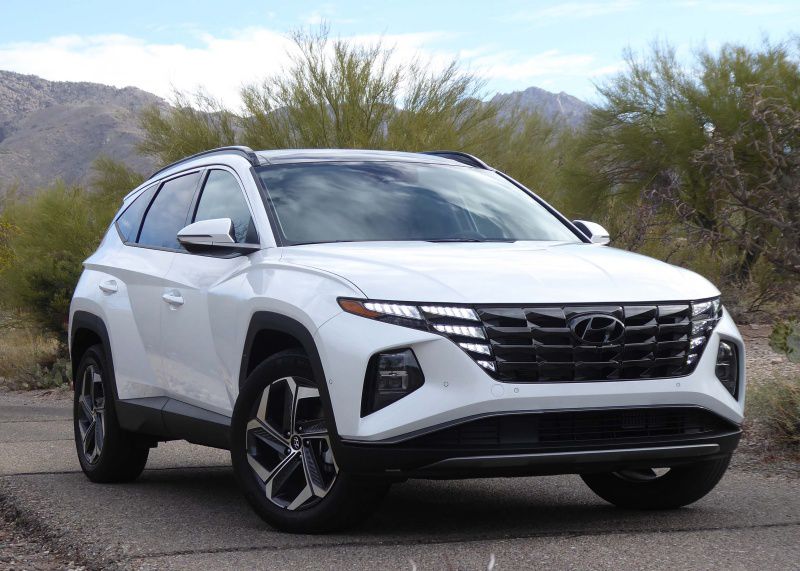
2022 Hyundai Tucson ・ Photo by Ron Sessions
Hyundai likes to give each of its five crossover SUVs a unique look; the design of the 2022 Tucson won't be forgotten anytime soon. Lurking in the upper outer edges of the new Tucson’s segmented parametric grille are 10 LED daytime driving lights that, when illuminated, create a wing-shaped light signature like nothing else on the road. It’s an attention grabber Hyundai is counting on to help it stand out in a crowded SUV field.
For the 2022 model year, the North American version of the all-new fourth-generation Tucson receives a 3.4-inch wheelbase stretch and another 6.1 inches nose to tail, substantially boosting passenger and cargo space. That puts Hyundai’s best-selling SUV head to head with the Toyota RAV4, Honda CR-V, and Nissan Rogue.
The roomier, jazzier five-passenger 2022 Hyundai Tucson adds a new sport-trim N Line to a lineup that also includes a gas-powered base SE, a well-equipped SEL, and a range-topping Limited, all available with a choice of front- or all-wheel drive. Also new for 2022 are gas-electric and plug-in versions of the Tucson, covered in a separate review.
Including the $1,185 destination charge, the 2022 Tucson prices are $26,135 for the base SE, $27,685 for the well-equipped SEL, $33,785 for the sporty N Line, and $35,885 for the top-of-the-line Limited. All-wheel drive is $1,400 extra on any model.
New Smartstream Engine
The 2.0-liter and 2.4-liter 4-cylinder gas engines in last year’s Tucson are replaced by a new naturally aspirated 2.5-liter Smartstream 4-cylinder with dual (direct and multi-port) fuel injection that’s calibrated to deliver lower emissions and improved fuel economy. The 2022 Tucson’s 2.5-liter is rated at 187 horsepower and 178 lb-ft of torque, which makes it competitive against the Honda CR-V’s 1.5-liter turbo (190 hp and 179 lb-ft torque) but a little behind the Toyota RAV4’s 2.5-liter (203 hp and 184 lb-ft torque).
Front-wheel-drive versions of the new Tucson are EPA-rated at 26 mpg in the city, 33 mpg on the highway, and 29 mpg combined; all-wheel-drive models get a 24 mpg city/29 mpg highway/26 mpg combined. These represent a 3 mpg to 4 mpg improvement in EPA-estimated combined city/highway driving.
In the city and suburbs, the 2022 Tucson’s 2.5-liter offers sufficient acceleration to keep pace with traffic. It’s smooth and unobtrusive when moving, and it's relaxed at highway speeds.
Buyers looking for a bit more power (226 hp system output) and fuel economy (up to 38 mpg combined) may want to check out the new Tucson Hybrid.
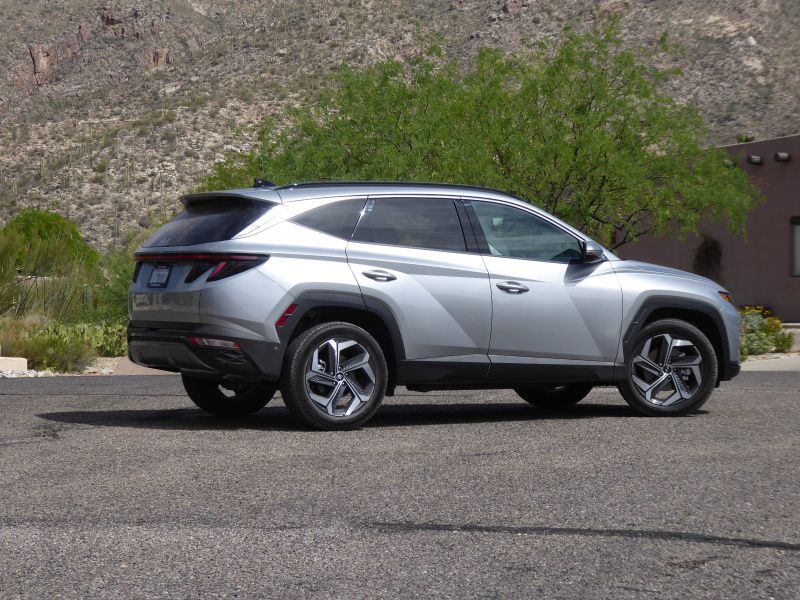
Photo by Ron Sessions
Shifting Gears
The 2022 Tucson upgrades from last year’s 6-speed automatic transmission to a new 8-speed unit. The new transmission has a wider ratio spread than last year’s gearbox, delivering improved low-speed response and more relaxed cruising. The step-shift 8-speed offers a smoother driving experience compared to the continuously variable transmissions in competitors such as the Honda CR-V and Nissan Rogue, which may experience engine droning when accelerating.
While the SE, SEL, and N Line models feature a traditional fore-aft transmission shift lever on the center console (leather-wrapped with the N Line), the Limited version gets a new pushbutton gear selector similar to that in the 2021 Hyundai Palisade and Santa Fe. The buttons don’t free up any console space but instead ease access to switchgear on the lower part of the dash. The pushbutton shifter is also used in hybrid variants of the Tucson.
You’ll want to familiarize yourself with the locations of the buttons before venturing out so you don’t have to take your eyes off the road to find a button, say, in the middle of a 3-point turn on a busy road.
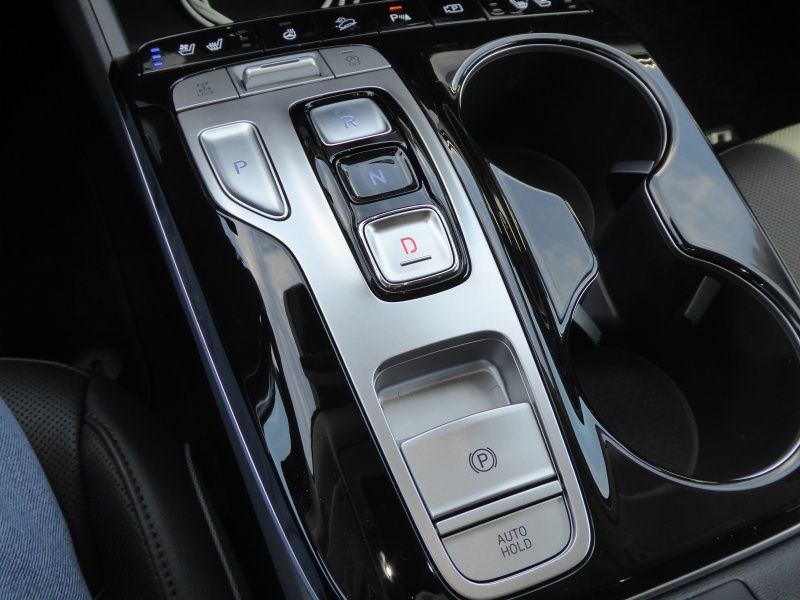
Photo by Ron Sessions
Roomy Cabin
Inside, the new Tucson feels spacious and open thanks to a low-and-away dashboard and a dual-cockpit instrument panel that blends seamlessly into the doors. It’s quiet as well thanks to extensive body sealing and an extra-thick acoustic laminated windshield.
A manual tilt and telescopic steering wheel is standard fare. It comes leather-wrapped in the N Line, while the Limited's comes leather-wrapped and heated. All but the base SE have standard dual-zone automatic climate control.
There’s ample storage in the glovebox, covered console cubby, generously sized dual cup holders, and door and console side pockets; there’s a deep console bin under the dash with USB and 12-volt power ports right where you want them.
A traditional hooded binnacle with analog gauges and a color 4.2-inch driver information screen are standard equipment for the SE and SEL trims. A driver-configurable 10.25-inch digital display is standard in the N Line and Limited, optional with the SEL. When the driver activates the turn signal in a Tucson Limited, one of the two major virtual analog gauges is transformed into a live blind-spot rear-quarter view display. The 10.25-inch display also changes colors with different driving mode selections (red for Sport, blue for Eco, and so on).
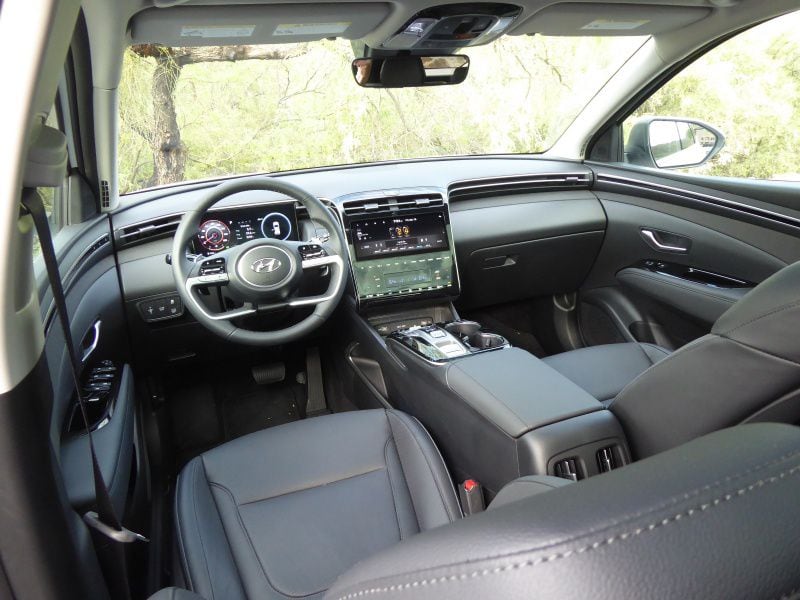
Photo by Ron Sessions
Take Your Seats
Up front, the Tucson’s bucket seats are comfy for long drives, featuring enhanced lateral seatback bolstering for good torso support. All but the base SE trim come with front seat heaters and a power driver’s seat with power lumbar adjustment. The seats are cloth-covered in the SE and SEL trims, while a cloth and faux leather sport combo adorn the new N-Line. The Limited trim goes full luxury with standard leather hides, heated and ventilated front seats, heated outboard rear seats, driver seat memory, and a power front passenger’s seat.
Thanks to the new long-wheelbase layout of the Tucson sold in the U.S., there’s a generous amount of rear seat legroom, considerably more than in the Toyota RAV4 and Honda CR-V. Three adults can sit back there comfortably. The rear seatback is split 60/40 with a fold-down center armrest and a pair of cup holders.
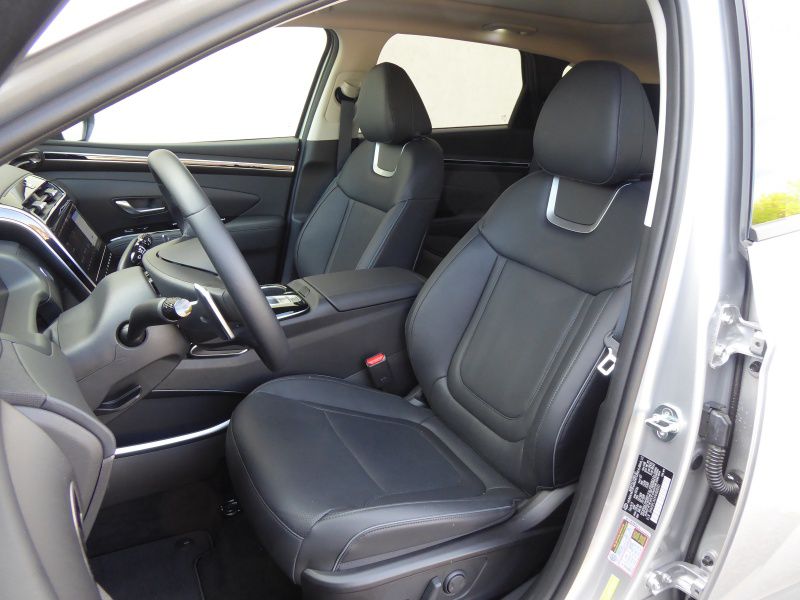
Photo by Ron Sessions
Infotainment and Connectivity
The Tucson gets two new infotainment systems for 2022. In the SE, SEL, and N Line trims, the invotainment system comprises an 8-inch touchscreen with wireless Apple CarPlay and Android Auto cellphone mirroring. In addition to touchscreen inputs, the system can be accessed via steering wheel controls, voice prompts, and Mercedes-Benz-like analog scroll wheels for volume and tuning. The base system has a simple 6-speaker AM/FM audio system with HD Radio. The SEL and N Line add enhanced voice recognition and a 3-month trial of SiriusXM satellite radio.
Limited upgrades to a wide-angle 10.25 high-definition touchscreen display with embedded navigation, digital volume and tuning, and enhanced voice recognition that uses speech-to-meaning and deep-meaning technology to assist with voice commands. But it also reverts to wired Apple CarPlay and Android Auto that need a USB connection to function. Included with this system is an immersive 8-speaker Bose premium audio system with custom equalization and digital processing. The Bose system is also optional for SEL and N Line trim levels.
Connectivity features include Blue Link and Digital Key. Standard on SEL and higher trims, Blue Link works with a smartphone app, smart watches, and digital home assistants for tasks like door locking/unlocking, setting climate controls, and engine starting. On N Line and Limited trims, Digital Key transforms your smartphone into a key fob.
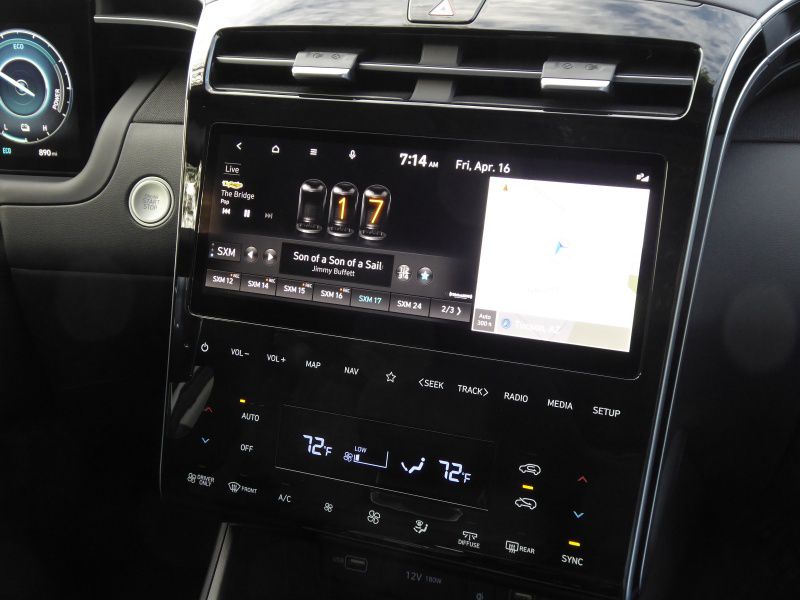
Photo by Ron Sessions
HTRAC All-Wheel Drive
Hyundai’s HTRAC all-wheel-drive system is a $1,400 option for all Tucson trims. There are four selectable driving modes: Normal, Sport, Smart, and Snow, each accessed via a toggle on the console. Normal is for everyday driving, varying torque distribution from 80% front/20% rear to 65% front/35% rear. Sport is calibrated for quicker acceleration and better handling as it varies torque distribution between 50% front/50% rear and 65% front/35% rear. Smart is Hyundai’s Eco mode and prioritizes fuel economy, varying the front/rear torque split from 100% front/0% rear to 80% front/20% rear. Snow optimizes the system for slippery conditions.
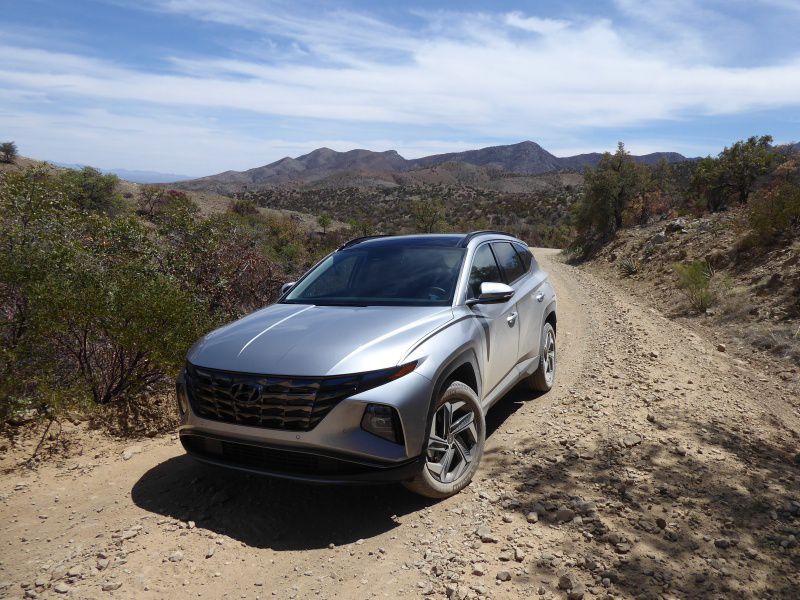
Photo by Ron Sessions
Remote Start Park Assist
Truly autonomous driving is quite a few years away, but autonomous parking is here. How many of us have had to crawl through the passenger door — or worse, through the liftgate or trunk — because someone parked so close to your vehicle that you couldn’t open the driver’s door?
Remote Start Park Assist, available only on the Limited trim, erradicates that situation. From outside the vehicle, the driver can start and move the Tucson out of an impossibly tight parking space using the vehicle fob. Then, say, if there’s an impossibly deep mud hole in the parking space, the driver can reverse the procedure and pull the Tucson back into the space without a driver behind the wheel. The system can apply the throttle, steer, and brake the vehicle and uses a bevy of sensors to avoid running into anything or anyone.
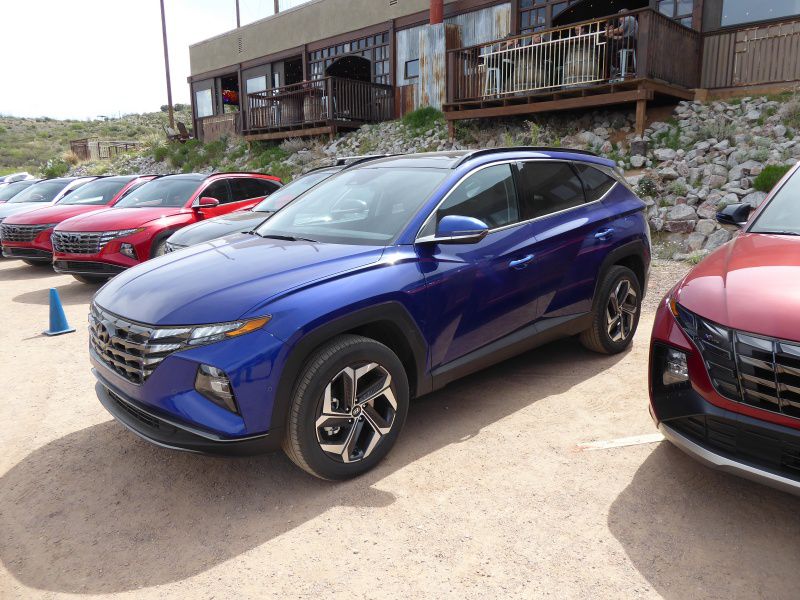
Photo by Ron Sessions
Spacious Cargo
The extra six inches of overall length added for the 2022 Tucson didn’t go to waste. The new Tucson offers generous cargo space: 38.7 cubic feet behind the rear seat and 74.8 cubic feet with the 60/40 split rear seat folded down. That’s more space than what's available in the Toyota RAV4 and Hyundai Santa Fe and just a bit smaller than the cargo area of the Honda CR-V.
There’s more space to hide small valuables such as a camera, purse, or laptop under the dual-level cargo floor. Access to the cargo area is easy with a hands-free power liftgate in N Line and Limited trims. Adding even more convenience are rear seatback release levers located just inside the cargo liftgate opening.
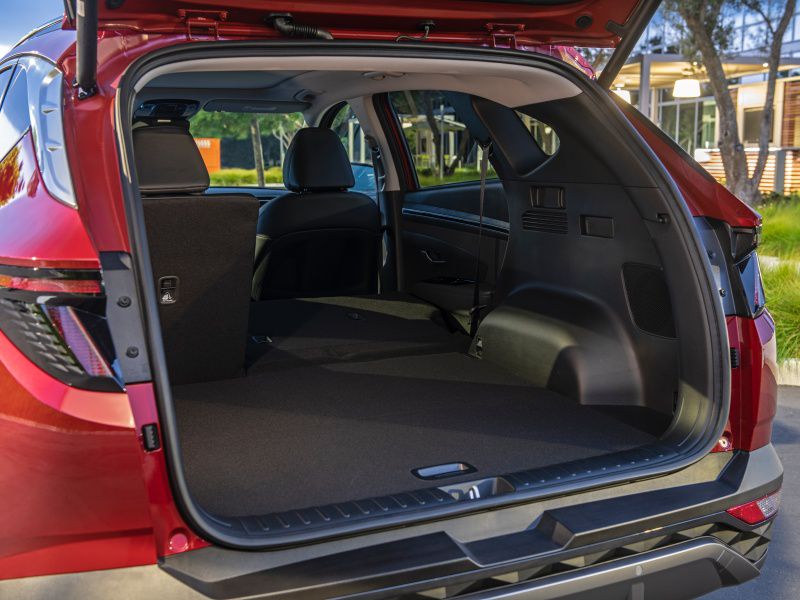
Photo by Hyundai
SmartSense Safety Tech
For 2022, the Hyundai Tucson offers an expanded roster of safety and driver-assistive technology. Hyundai continues to be a leader in offering these technologies in its mainstream products.
Standard features on all models include forward collision warning with automatic emergency braking, lane-departure warning with lane-keeping and lane-centering assistance, a driver attention warning, automatic high beams, a rear-seat occupant alert and a backup camera with dynamic guidelines.
Moving up to SEL trim adds adaptive cruise control with stop and go, and blind-spot and rear cross-traffic collision avoidance. The N Line brings safe exit warning and the Limited adds a surround-view monitor, a blind-view monitor, front and rear parking distance warning, reverse parking collision assistance, and Highway Drive Assist that combines lane-centering with adaptive cruise control.
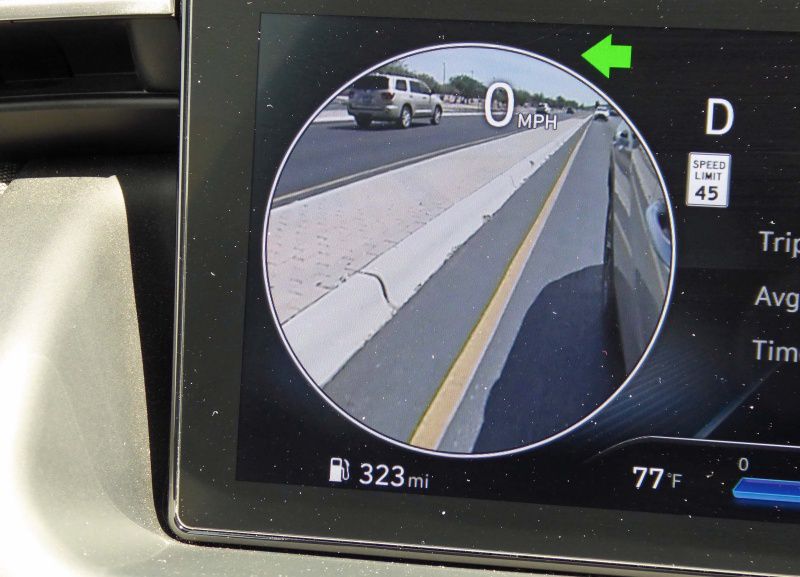
Photo by Ron Sessions
Looks Good Coming and Going
Attention-grabbing from the front and perky from the rear, the bold and highly sculpted 2022 Hyundai Tucson summons some fresh design Zen into the compact crossover suv space. Aside from its aspirational look, the new Tucson doubles down on giving buyers what they’re looking for — a more spacious cabin and increased cargo capacity, greener powertrain choices, better fuel economy, leading-edge, value-added connectivity and infotainment technology, and the latest and best in safety and driver-assistive systems.
Because it's a Hyundai, the Tucson comes with all of this premium content in a mainstream compact SUV at budget-friendly prices. And it’s backed by one of the best vehicle warranties in the business: 5-year/60,000-mile bumper-to-bumper coverage, 5-year/unlimited roadside assistance coverage, and 10-year/100,000-mile powertrain coverage.
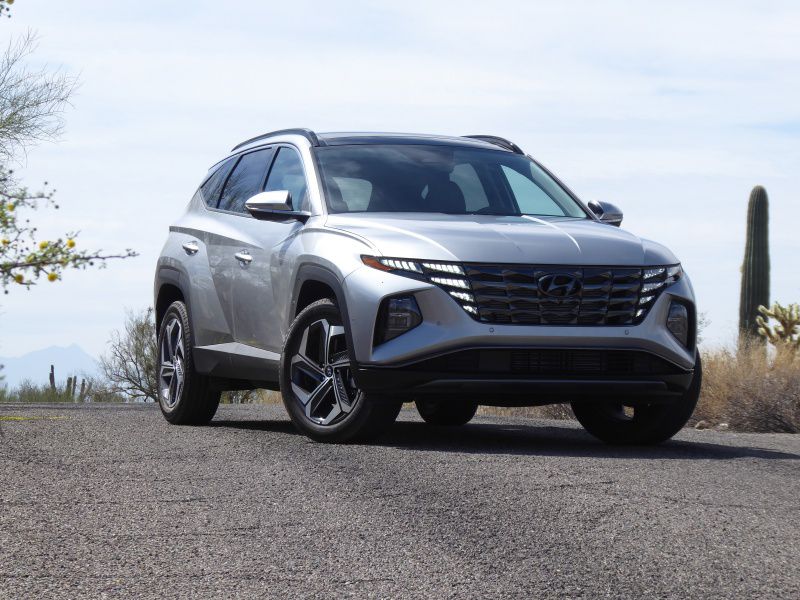
Photo by Ron Sessions